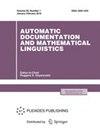Trends in the Publication Activity of Russian Organizations from 2000 to 2019
Abstract
As has been noted on numerous occasions, between 2012 and 2021, the pace of publications by Russian researchers rapidly increased; however, this growth was uneven in both quantitative and qualitative terms. Moreover, some research organizations had zero or even negative publication activity growth. To achieve a full understanding of the real development processes of the research sector requires analysis of the dynamics of dozens of indicators for hundreds of organizations. However, the question remains: how can these numerous data series be studied? To address this problem, this article proposes a method of classifying trends in time series based on a combination of three statistical tests of randomness against trend: the Cox-Stuart test, the inversion test of randomness, and the Mann–Kendall test. The method is used to classify a series of scientometric parameters that characterize various aspects of the publication activity of 701 leading Russian research organizations and universities, including a comprehensive publication score (an analogue of the official Composite Score for Publication Performance (CSPP)), the average quality level of publications, and the share of articles in conference proceedings. The differences trends of organizations of different types and performance categories are identified. This information is used to formulate new questions for further research into the causes of the observed trends in the development of Russian science.


 求助内容:
求助内容: 应助结果提醒方式:
应助结果提醒方式:


